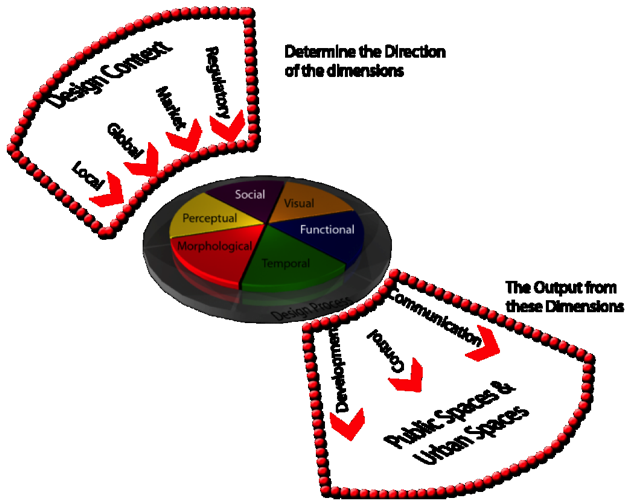
Hisham Moustafa
Integral Urbanism falls far from the theory and practice that urban design has undertaken for tens of years. The important aspect it tackles is to support the complex range of human needs, allowing not just humans to survive but to prosper. It main aim is to create places by the people for the people. Integralism attempts to learn from its past mistakes and successes and evolve on them to create this new theory. It attempts to reconsider the philosophy of isolating one trend from the next that originated in the past. The concept focuses on the creation of good public places for the people residing and using them.
Theorists, after extensive analysis, reached the conclusion that to create successful urban spaces and public places there six dimensions that need to be followed. They are morphological, perceptual, social, functional, visual and temporal. Each one of them focuses on a certain aspect of people's needs in an urban space. The morphological dimension focuses on the form and design of the space, the perceptual, focuses on a more psychological aspect and investigates how people feel in a place, Social focuses on people's behaviour in a space, Functional, looks at the functional requirements that people need in a space (e.g. seating, landscape, activities, etc...) Visual, focuses on what a user sees (e.g. Elevations, materials, etc...), and finally Temporal, focuses spaces change through the factor of time. A loss in any of these dimensions will not create a successful environment for people to enjoy using the space. These factors along with their sub-topics, create the integrate indicators.
For these integrate indicators to work, a framework is devised to support the philosophy, known as the Integrate Principles of Place Making (IPPM). This framework originated from the critical analysis of both the LUDA project and the BEQUEST toolkit. The analysis undertaken allowed the research to understand what are the strong points of each framework and what are their weak points and that helped evolve the six dimension framework that is introduced in this thesis. The framework combined the assessment methods, the planning activity, the integrate indicators, the stakeholders, the spatial scales and the time scale. This framework will support the final part of the thesis.
The final part of the thesis attempts to investigate how this framework could be implemented into practice, through the execution in areas in two cities, Dundee and Kuwait. Each city undergoes extensive analysis of its history, existing conditions, land use, Stakeholders perception and how practice affects the design. This data will help in the diagnostic aspects of the space. It helps in understanding the differences in each city and how they adapted to these problems. This section is analysed using AHP to understand the priorities of each city. The next step after the diagnosis is to create several scenarios, using the integrate principles created to in the selected spaces, and they are analysed through programs like ECOTECT and Space Syntax and they are presented through programs like 3D MAX, AutoCAD and Photoshop. These scenarios will help in the creation of a benchmark for the integrate principles.
